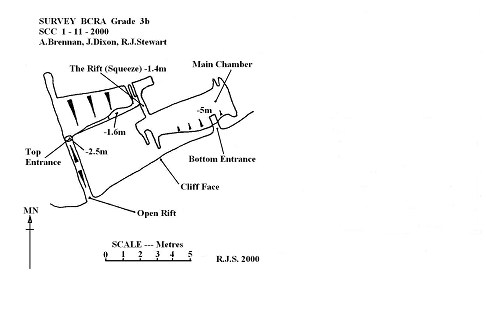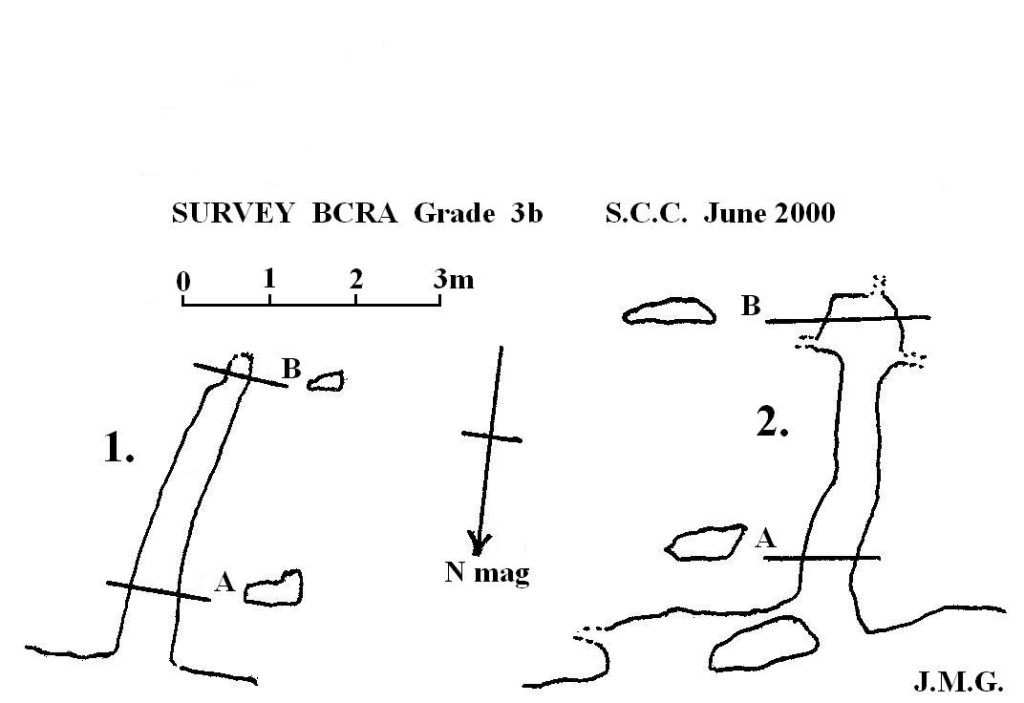Moorland Caver (2003)
NGR: SE 564865
Altitude: 160m
Access: Mr. Ivan Holmes, Tylas Farm
Approach either along the footpath above Oxendale leading from Old Byland Road or along the bridleway which runs beside the River Rye and leads to the bottom end of Oxendale. Both holes lie in the obvious crag. In addition the crag contains other, shorter fissures, which might repay further examination.
OXENDALE FISSURE
Length: 12 m
Entertainment value: I
Obvious “Roulston Scar type” fissure whose entrance is partially blocked by a dry stonewall.
History
Known locally, first noted by an S.C.C. /A.C.C. team in February 1999.
NOT OXENDALE WINDYPIT
Length: 15 m
Depth: 6 m
Grade: II
Entertainment value: II
Warning: Beware loose rock and broken glass in the entrance.
This rather short interesting hole is not easy to find: To the west of Oxendale Fissure lies a rubbish heap, 5 m beyond you come to an open fissure with a tree growing in the entrance. Follow this fissure until a rather grotty, unstable looking hole is found at the foot of a climb.
Drop down through the hole, Straight ahead is a short, flat out crawl under a poised boulder leading into a constricted boulder chamber with no way on. To the right one enters a low, roomy bedding type chamber with a
narrow rift along the south wall. Drop into the rift at the widest point and on into a small chamber. In the floor of the chamber is a very narrow rift. A tight squeeze down through the rift (larger cavers will experience major problems here, especially on the return) opens into a roomy chamber 4.5 m long and up to 7.5 m high. For those too fat to get back up the rift there is a rather sneaky back door: Climb up into the roof of the chamber at its highest point where a letterbox opens up onto the cliff face, an easy climb brings one back down to terra firma.
History
Discovered and dug by a joint S.C.C./ A.C.C. team between February and March 1999. The rather odd name resulted from heated discussions between two of the original explorers; one of whom wanted to call it Oxendale Windypit, the other didn’t. “Not Oxendale Windypit” emerged as something of a compromise!





